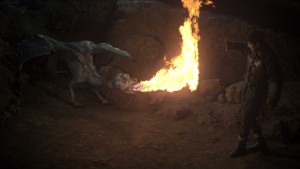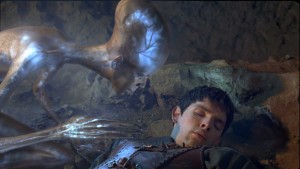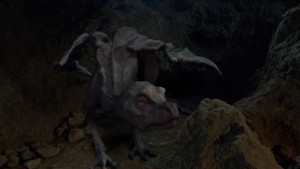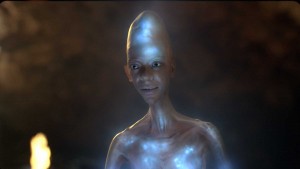
“Before we started work, there were five of us,” said Illingworth, a veteran digital artist and VFX supervisor, who had handled the matte painting for the previous series of Merlin. “When we finished, there were 20. We had to get the whole company up and running – down to buying the desks and chairs – in three months. And of course, we had to decide what software to use.”
According to Illingworth, Solid Angle‘s Arnold renderer plays a key role in the facility’s workflow. Developed by Solid Angle founder Marcos Fajardo in 1997, this fast, physically accurate raytracing renderer has steadily built a user base that includes some of the world’s major VFX studios. Sony Pictures Imageworks, with whom Solid Angle has a long-established development partnership, has used it as its primary renderer for years. Other clients include Digital Domain and Framestore.
“All we knew about Arnold before we got started was that big studios were using it and liked it,” said Illingworth. “But we were pleasantly surprised with the support we got from the developers and management team – and how easy it was to get beautiful images out.”

The Euchdag, a photorealistic humanoid character driven by actress Josette Simon‘s motion-captured performance, was to prove the show’s key technical challenge.
“She’s very slight, and withered and skinny,” said Illingworth. “But she also has a translucent quality. Her skin refracts the light, and you can see her internal organs glowing inside. We were trying to achieve a look like a jellyfish.”
To replicate the luminous, gelatinous transparency of a sea creature, Vine needed to mimic a range of complex real-world light effects, including subsurface scattering, soft shadows and multiple internal refractions. Moreover, it needed to do so in no more than 40 minutes per frame.
“It’s one thing to make shots look great, but we had to prevent render times from getting out of hand,” Illingworth explained. “We had a colossal amount of work to do.”

“The great thing about Arnold is that you can get really nice renders right off,” explained Ivor Middleton, Vine’s head of 3D. “It’s all about the bounced lighting. It’s not like old-fashioned ambient or diffuse occlusion. [Because it’s a physically accurate raytrace renderer] you can put a single light into an environment and get all your indirect lighting for free.”
This simplicity of workflow was a key selling point for Middleton, who also considered using RenderMan, 3Delight, mental ray, V-Ray and Houdini‘s Mantra renderer for the work. “With Arnold, we’d typically only have around three lights per scene – a key, fill and edge lighting. If you were lighting a similar shot in RenderMan, you would typically end up with quite a few area lights to get the set looking nice, but with Arnold, an awful lot comes from the environment itself.”
And because Arnold does not need to pre-calculate secondary data like point clouds, shadow maps or irradiance caches before commencing a render, the calculation process itself is memory-efficient, placing minimal load on servers and network infrastructure, and requires little human intervention.
“If you’re generating point caches, you have to go through and debug them. There’s more TD-ing to do,” said Middleton. “Because Arnold is handling all of that for you, it’s a lot simpler.”

“Arnold worked beautifully for this particular project, but we’re not going to disappear at the end of the show,” said Illingworth, who is now negotiating a range of future TV and movie effects projects. “We regard our pipeline as a long-term investment.”
Vine uses a range of tools for its 3D work, from 3D-Coat to Houdini, but its workhorses are Maya for asset creation and animation, and The Foundry’s Nuke for compositing. Arnold links into this pipeline seamlessly, with Maya writing out files in its native ASS file format via Solid Angle’s MtoA plugin, and Arnold spitting out a range of render passes, both standard and user-customized, ready for compositing in Nuke.
“We knew that we weren’t going to have time to do a big setup or write shaders,” said Middleton. “That Arnold worked out of the box was as important to us as what it could do as a renderer.”
The fact that Arnold’s workflow felt familiar to users of other popular render engines was a further bonus.
“Because we’re a very small facility, we have to go with tools we think the artists we hire are going to pick up quickly,” said Illingworth. “We thought RenderMan lighters from the movie world would be comfortable using Arnold, as well as people from TV backgrounds using mental ray.”
“If we hadn’t used Arnold, a lot more of the work on Merlin would have to have been done in the composite,” concluded Illingworth. “We would have had to bully the render passes into working in the way we wanted. What was impressive with Arnold was that, even with just a single light, each creature sat in its environment pretty much out of the box. They looked fantastic straight away.”





